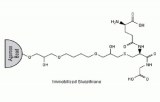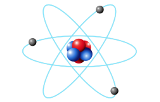The principle of chromatography is based on two phases: the mobile phase, which drives the sample, and the stationary phase, which allows its purification. Chromatography resins constitute this stationary phase.
There are different types of chromatography depending on the resin used. The four main types of chromatography include affinity chromatography, ion exchange chromatography (IEX), hydrophobic interaction chromatography (HIC), and size exclusion chromatography (SEC). Most purification systems require the use of several of these types to achieve the purity required for downstream applications. The choice and order of the most appropriate methods are essential in optimizing a protein purification process.
Comparison of Main Chromatography Types
| Type of Chromatography | Separation Principle | Interaction | Elution |
|---|---|---|---|
| Affinity | Specific interaction | No competitive ligand | Competitive ligand (specific), breakdown of protein/protein interactions by condition change (non-specific) |
| Ion exchange | Net surface charge | Low ionic strength | High ionic strength, increasing (cations) or decreasing (anions) pH |
| Hydrophobic interactions | Hydrophobicity | High ionic strength | Low ionic strength |
| Size exclusion | Hydrodynamic radius |





